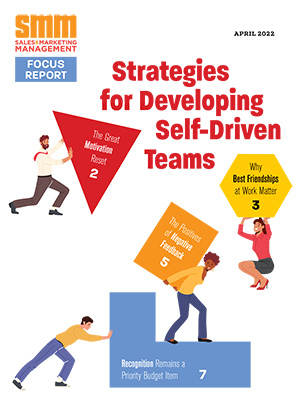Gallup surveys how many employees in the U.S. work force are engaged and reports its findings each year. Nearly seven in 10 (68 percent) are disengaged as of the 2016 report. Ever since Gallup began measuring employee engagement in 2000, the percentage of engaged workers in the U.S. has never topped 33 percent. Worldwide, only 13 percent of employees working for an organization are engaged. (For the record, Gallup defines engaged employees as those who are involved in and enthusiastic about their work and workplace.)
These statistics should startle. But much like the national debt or crime figures, the numbers are released and seemingly shrugged at. If seven out of 10 workers are not engaged, corporate leaders cannot possibly look around their office and think it’s some other company’s problem.
Perhaps they feel there’s little they can do about it, or they don’t know where to start. Most would argue it’s a top-down problem. Harvard Business Review research shows that managers account for as much as 70 percent of variance in employee engagement scores. Another Gallup study of more than 7,200 adults in the U.S. show that one in two had left a job at some point in their career to get away from their manager.
Too important to ignore
The disengaged work force is a pandemic that corporate America cannot afford to ignore. As Alyssa Retallick states in an article posted for Glassdoor.com, “actively disengaged employees aren’t just unhappy at work — they’re busy acting out their unhappiness. Every day, these workers undermine what their engaged coworkers accomplish. They’re aggressively lowering morale and productivity levels. These people can be a real danger to any organization.”
“Engagement” may feel like a nebulous term and a bit of a buzzword, says Scott Crabtree, a speaker and corporate consultant on the topic, but “it’s universally needed, universally lacking and has a significant impact on things we want, including the bottom line.”
Crabtree earned an undergraduate degree in cognitive science from Vassar College (“I’ve been enthralled with brains and what makes us tick and not tick so well between the ears for a long time,” he says.) He spent most of his career leading the design and development of video games, and eventually landed at Intel. He told Sales & Marketing Management that during his work there, he “discovered there was solid, peer-reviewed science of happiness and thought it was the most amazing thing I’d come across in my life.”
He left Intel and founded Happy Brain Science, a Portland, Oregon-based consultancy whose mission is to empower organizations and individuals to boost happiness at work and increase engagement, productivity and creativity. Crabtree’s definition of choice for employee engagement is “an emotional commitment to work that results in increased effort, performance and quality of work life.”
Engagement can’t be bought
“There are a lot of things you will not hear me talk about when I give my overview of how to get most of what you need for employee engagement. One of those is compensation. It’s complex and it’s usually something that my audiences can’t immediately control,” Crabtree says.
You cannot buy somebody’s engagement, but you can fail to buy it, he explains. “If you feel that you are not getting compensated fairly, it will disengage you from the work you are doing. But I could give you a raise of a half-million dollars per year and it would not be enough to engage you. Fair compensation is necessary but not sufficient to get employee engagement.”
What will improve employee engagement? Crabtree says he has advised such notable companies as DreamWorks Animation, Microsoft and Boeing on this challenge. A centerpiece of his message is to “mind the GAPs,” a mnemonic device for two sets of factors that he says are scientifically proven to improve employee engagement: goals, alignment and progress, and growth, appreciation and people. (See sidebar on page 22.)
“All of what I present is grounded in data or science of some kind. I try to give people as little of my opinion as possible,” Crabtree says. “[Intel co-founder] Andrew Grove had a great quote that was often repeated around Intel: ‘Everyone has an opinion, some people have data.’”
Does happiness = engagement?
Some people will tell you that employee happiness and employee engagement are two totally different things. Crabtree disagrees. “If you define happiness the way scientists do — as a deep, meaningful sense of satisfaction with life, as well as short-term positive emotions — there is a lot of overlap between happiness and engagement. They are two different things, but a lot of what you do to get happiness will also get you engagement.
John O’Brien, vice president of the Employee Performance Group at BI Worldwide, a global engagement agency, says organizations have been trying to sell employees on engagement but what employees really want is happiness. “Instead of declaring undying loyalty or planning long-term career intentions, employees want to enjoy their work, find meaning in it, be recognized when they do well and feel a sense of achievement,” O’Brien states in a report on employee engagement trends.
O’Brien offers three steps that companies can take to increase happiness at work:
- Acknowledge contributions and effort. Go beyond the cookie-cutter recognition program and create unique recognition tailored to employees’ passions.
- Recognize service. Don’t wait for the traditional five-year anniversary. Celebrate milestones early and often, including at one month and one year.
- Enhance your culture. Work should be somewhere employees want to be, not have to be. Don’t be afraid to give them opportunities to thrive.
Engagement cuts both ways
The onus for increasing employee engagement is most often placed on the employer and managers. However, Crabtree emphasizes that employees must take responsibility for a great deal of their own engagement levels.
“It is a partnership between employees and their management or leadership,” he says. If you’ve got what he calls a caver — a person who is consistently against everything — you may want to think twice about expending a lot of energy trying to drive engagement. “If you have someone who sits back with their arms folded and their brows furrowed saying, ‘Go ahead, engage me,’ it’s not going to go very well.”
And Crabtree encourages workers to take the initiative to increase their own engagement. If you walk through the framework of setting goals, communicating, discovering strengths and measuring progress, employees do not have to wait for their managers to make progress in these areas.
“Don’t wait for your boss to come to you. Give yourself appreciation. Appreciate your peers. Heck, appreciate your boss.
Lastly, Crabtree says it is important for managers to recognize that those employees who are fully engaged in their jobs are the ones who most need true down time. “Kick people out of the office on weekends. Tell them to go home at 6 o’clock. They are going to come back because you’ve engaged them. But make sure they understand it’s a marathon, not a sprint.”
RELATED TO THIS STORY:
Mind the GAPs To Increase Engagement



